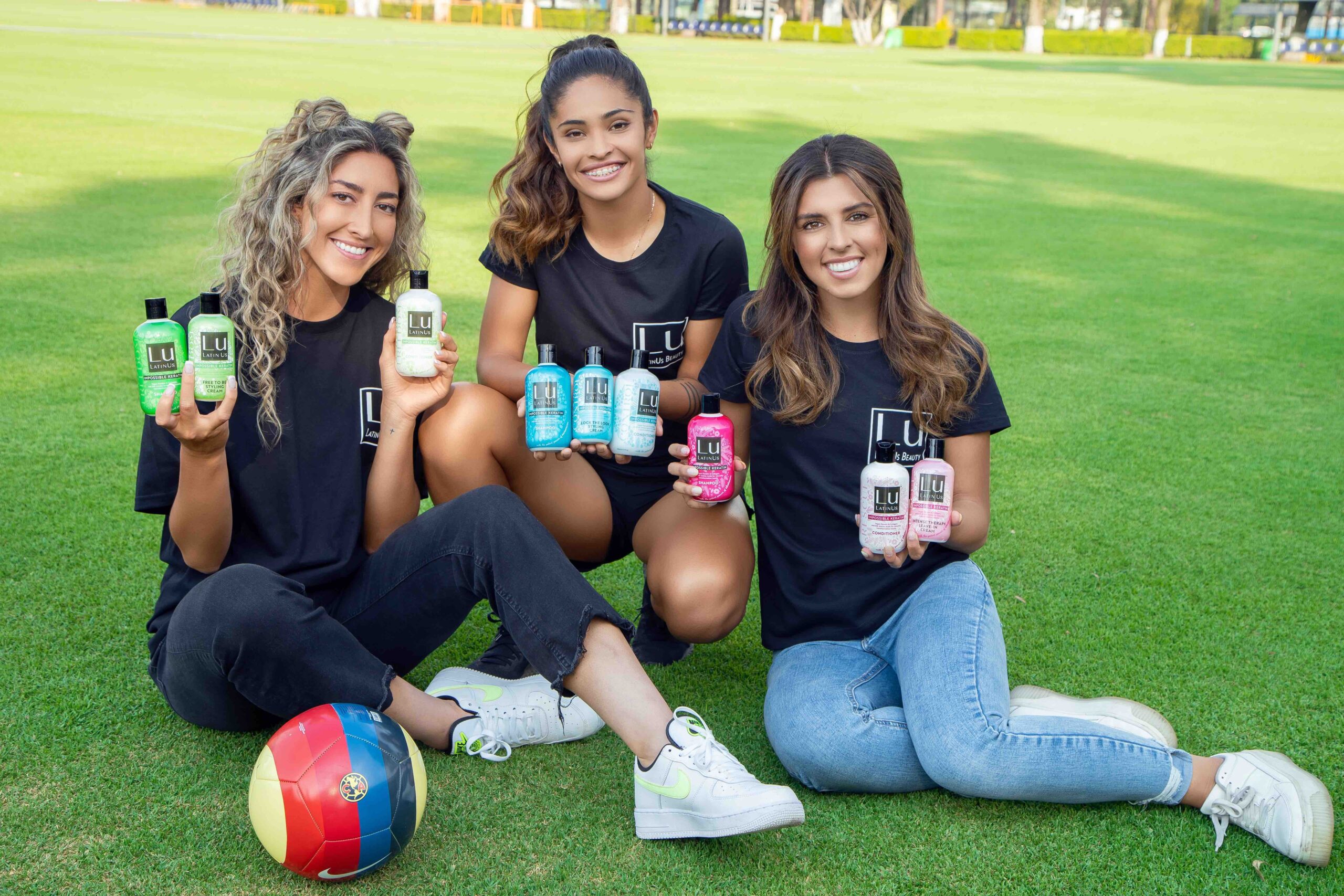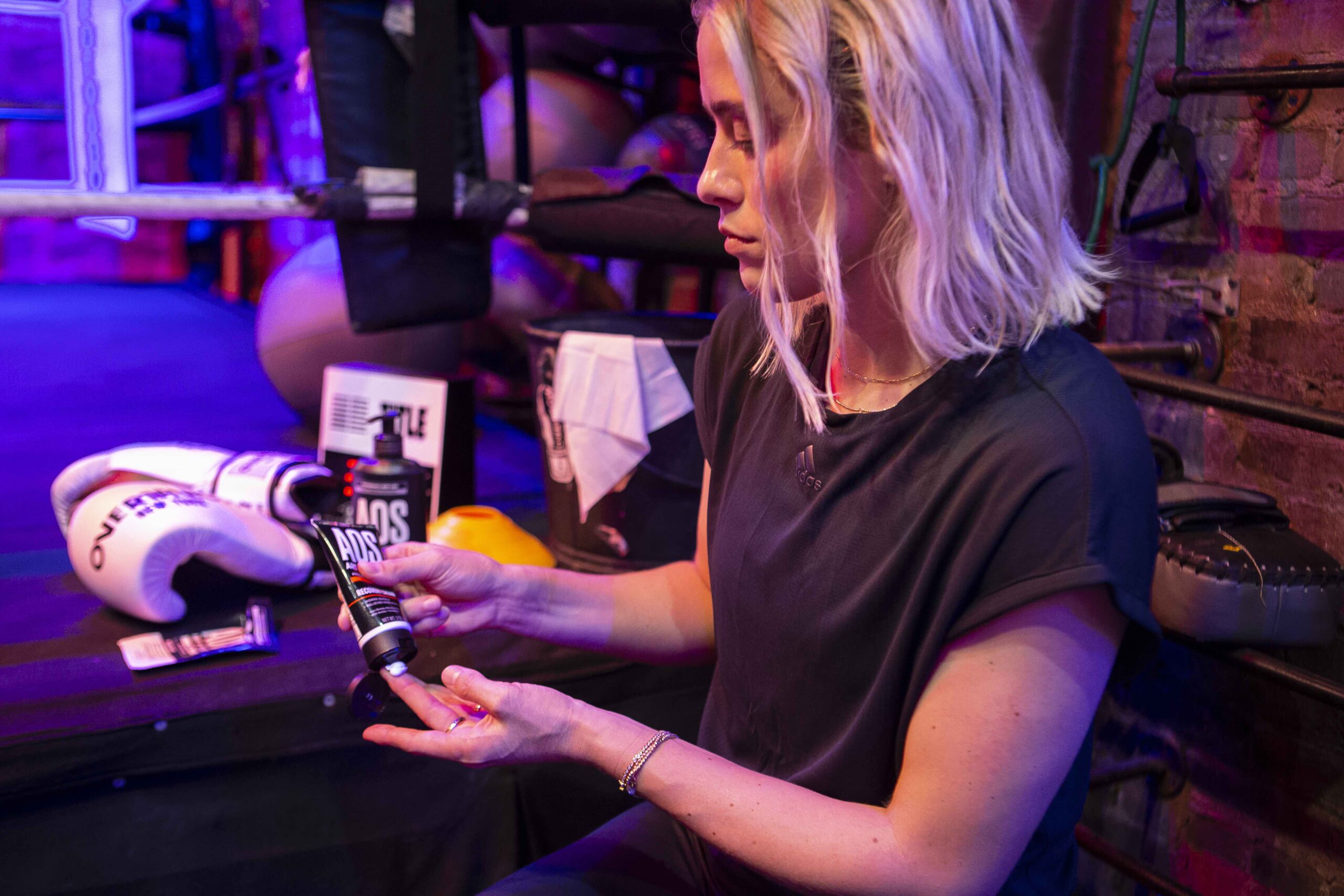For a brand that’s been on the market for a year, LatinUs Beauty learned fast how to make a power play.
Early 2021, the made-in-California haircare brand scouted celebrity ambassadors from Mexico’s Club de Fútbol América, the 105-year-old soccer team that’s one of the most popular in the world. But LatinUs sidelined the male players, instead opting to sponsor the women’s team as its first beauty partner. The brand featured the players in its social media marketing.
An assist from Club América gave LatinUs enough of a kick to launch in Mexico two years ahead of schedule. In the first three months of the sponsorship, LatinUs reports its number of social media followers and rate of engagement each increased 30%.
Club América’s female players “were the perfect ambassadors that would match our purpose and they were so strong, powerful, high-endurance athletes,” says Capela Barros, CMO at LatinUs. “We felt it was the right time to get into this, especially [because] you don’t have that much competition.”
Boosted by the focus on digital advertising, particularly in social media, marketers’ non-stop hunger for authenticity and a new NCAA rule that permits college athletes to ink endorsements, female athletes are becoming more relevant than ever to the beauty industry. Whether it’s competing at the Olympics, playing in the WNBA Wubble, taking care of their mental health or cleaning up post-workout, next-gen athletes-cum-beauty influencers represent a diversity in styles and experiences that seem to resonate with consumers.
“There is a lot of opportunity in this space,” says Vanessa Fraser, 26, a distance runner who in May became the inaugural athlete sponsored by dry shampoo line Swair. “Female athletes have a significant platform for sharing things other than the shoes they work out in or the clothes they work out in or the nutrition they use. Beauty products, I think, are very important to athletes.”
 Thanks to a lift from its sponsorship of Club de Fútbol América, which has included promotions with soccer players Jocelyn Orejel, Daniela Espinosa and Jennifer Muñoz, LatinUs launched in Mexico two years ahead of schedule. FRANCISCO DEVIA
Thanks to a lift from its sponsorship of Club de Fútbol América, which has included promotions with soccer players Jocelyn Orejel, Daniela Espinosa and Jennifer Muñoz, LatinUs launched in Mexico two years ahead of schedule. FRANCISCO DEVIA
Sporty and fashionable women have long managed to secure beauty endorsements. Subsequent to spinning her wedge hairdo to Olympic gold in 1976, figure skater Dorothy Hamill landed in ads for Clairol’s Short & Sassy hair conditioner. In 2011, L’Oréal Paris added Paralympic runner Aimee Mullins to its family of famous spokespeople, which, at the time, included Beyoncé, Jennifer Lopez and Gwen Stefani. In 2017, CoverGirl filmed a commercial with professional motorcycle racer Shelina Moreda, who sped around a track with luscious lashes plumped up by its mascara. Surfers Coco Ho and Tia Blanco went a step further by becoming proprietors of their own respective beauty lines.
Recently, the bench of athletes in the beauty world has grown deeper. After highlighting stories of various female champs ranging from World Cup winner Megan Rapinoe to rising tennis star Coco Gauff on its sister editorial site Into The Gloss, Glossier became the WNBA’s debut beauty partner in 2020. Incorporating the perspectives of eight basketball pros, including Sue Bird, Lexie Brown and Gabby Williams, the campaign for the brand’s Body Hero product helped its body care category sales multiply roughly threefold year-over-year in 2020.
“Creatively, we wanted to center the [WNBA] athletes and give them the freedom to share their own stories with the world,” says Glossier creative director Marie Suter via email. “All of the content was self-shot by each of them and brought to life who they are as competitors and individuals.”
“Female athletes have a significant platform for sharing things other than the shoes they work out in.”
Beauty brands and athletes are collaborating in a myriad of ways to promote products and messages. Huda Beauty’s logo was emblazoned on stock car racer Toni Breidinger’s racing suit and the Chevrolet SS she drove in the General Tire 200 race at the Talladega Superspeedway last April. SK-II’s video of an animated version of renowned gymnast Simone Biles fighting social media trolls has been viewed more than 2.7 million times since its May premiere on YouTube.
“I’m taking a throwing-everything-at-the-wall-and-seeing-what-sticks approach,” says Fraser of her Instagram content for Swair, which pays her a monthly stipend for at least a post a month along with a commission on sales for a certain term. Among her promos was a product giveaway rewarding five people guessing the closest to her winning time in a 1-mile race. Swair discloses its social media following jumped 25% as a result of the giveaway.
“It’s a really fun way to make these incredible athletes relatable to normal everyday athletes,” says Swair co-founder Carrie Sporer. Besides its relationship with Fraser, Swair has an affiliate marketing program through its e-commerce website with about two dozen women such as Casey Urban, a mom, flight attendant, yogi and pole dancer. “We’re really trying to reach a diverse market,” said Meredith Krill, Sporer’s fellow co-founder at Swair.
 Since the NCAA’s policy allowing college athletes to commercialize their name, image and likeness went into effect in July, Starface has partnered with more than 13 female students, including University of Oregon sprinter Iman Brown.
Since the NCAA’s policy allowing college athletes to commercialize their name, image and likeness went into effect in July, Starface has partnered with more than 13 female students, including University of Oregon sprinter Iman Brown.
Many brands are eyeing the college level because the NCAA has changed its policy on the commercialization of college athletes’ name, image and likeness (NIL). There’s a plethora of female student athletes to choose from. According to the NCAA, during the 2019-20 academic year, there were 285,971 men and 224,042 women playing college sports, including traditional pursuits like track and soccer as well as emerging esports. Between 2010 and 2020, the amount of women playing in college climbed by 20%.
Since the NCAA’s interim NIL policy went into effect in July, skincare company Starface began signing a group of college athletes. It currently works with about 13 women, including Stanford gymnast Kyla Bryant and University of Oregon sprinter Iman Brown. They’re compensated for the content they produce for social media channels like Instagram and TikTok. The deals typically last a semester.
“For young people, we think it’s really important to show where they are, to see these young women juggle so much—their craft, their school, being a young person in 2021, maybe skincare issues on top of that,” says Kara Brothers-Phillips, SVP of strategic initiatives at Starface. “It brings authenticity to the conversation that other influencers and celebrities don’t offer our everyday Starface follower.”
“It brings authenticity to the conversation that other influencers and celebrities don’t offer.”
While contracts with beauty companies can bolster athletes’ incomes and aid with overcoming gender pay inequity, fees and perks vary. Art of Sport, which was co-founded by Lakers legend Kobe Bryant and pioneered the trend of hiring athletes as personal care gurus, offers opportunities for its sponsored athletes to invest in its business.
Ishveen Anand, founder and CEO of OpenSponsorship, a platform that connects companies like Birchbox with over 8,000 athletes for endorsements, says payments vary based on an athlete’s stature and social-media following. For instance, she says OpenSponsorship’s talks with the teams repping Biles and Aly Riesman involve multiyear deals in the “high six-, low seven-figure numbers.” She declares, “Those are the Kim Kardashians of the sports world.”
She reveals OpenSponsorship’s biggest beauty transactions run from $10,000 to $20,000 for a social media campaign revolving around an athlete with social media audiences of 500,000 to 2 million people. In the college sphere, she doesn’t expect to see deals exceeding $400 per post. “What you’re seeing is scale,” she says. “Brands are coming in and doing scale with 20 athletes.”
 Joining a roster that includes pro basketball player James Harden and football players JuJu Smith-Schuster and Chase Winovich, soccer star Abby Dahlkemper is currently the only female athlete working with Art of Sport. Michelle Farsi
Joining a roster that includes pro basketball player James Harden and football players JuJu Smith-Schuster and Chase Winovich, soccer star Abby Dahlkemper is currently the only female athlete working with Art of Sport. Michelle Farsi
Succeeding its sponsorship of Club de Fútbol América’s women’s team, LatinUs plans to navigate the college hierarchy and identify a school team for a future partnership. “By what we’ve done with our Fútbol América alliance, it’ll be a lot easier to speak to athletes here in the U.S.,” says Millie Carrasquillo, chief research officer at LatinUs.
As Art of Sport has discovered, activations at the grassroots level can be impactful. In March 2019, it was the only skincare brand that participated in a girls’ high school volleyball tournament in Spokane, Wash., where it sold Dopp kits, gave out samples and engaged with parents among the 4,000-strong crowd. It also participated in women’s basketball tournaments sponsored by the Amateur Athletic Union in Garden Grove, Calif., and Chicago. Art of Sport co-founder and CEO Matthias Metternich says the takeaway from those events was “there was a lot more appetite from attendees to engage in a brand like ours.”
To be sure, Art of Sport isn’t downplaying its sponsorships of pro athletes, including basketball player James Harden, and football players JuJu Smith-Schuster and Chase Winovich. Soccer star Abby Dahlkemper sealed a deal with the brand in August 2020. She’s currently the sole female athlete on its roster after Art of Sport paused its sponsorship of surfer Sage Erickson in the beginning of this year. The Houston Dash defender has become a muse for Art of Sport’s development of new formulations for women. “We just don’t hire a female athlete to hold up a product and post it,” says Metternich. “They’re in the process of creation and invention.”
As for partnering with male players, Capela Barros of LatinUs expressed a sentiment echoed by some of her beauty industry peers. “Not for now,” she says. The men will have to wait their turn.
KEY TAKEAWAYS Due to a strong focus on digital advertising, persistent quest for authentic ambassadors and a new NCAA rule that permits college athletes to ink endorsements, indie beauty brands are striking partnerships with female sports stars big and small. Next-gen athletes-turned-beauty influencers represent a diversity in styles and experiences that seem to resonate with consumers. The emerging haircare brand LatinUs Beauty became the first beauty partner of Mexico’s Club de Fútbol América’s women’s team. The deal led to its social media following and engagement to each increase 30%. Glossier became the WNBA’s first beauty partner in 2020. A campaign for its product Body Hero featuring WNBA athletes, including Sue Bird, Lexie Brown and Gabby Williams, helped the brand’s body care category grow more than threefold. Professional distance runner Vanessa Fraser is sponsored by dry shampoo specialist Swair. A giveaway she was involved in resulted in Swair’s social media following jumping 25%. Fraser is paid a monthly stipend to post on social media and sales commission. Pimple patch brand Starface currently works with about 13 women athletes, including Stanford gymnast Kyla Bryant and University of Oregon sprinter Iman Brown. A platform connecting athletes and brands, OpenSponsorship’s biggest beauty transactions range from $10,000 to $20,000 for a social media campaign revolving around an athlete with social media audiences of between 500,000 and 2 million people. In the college arena, social media posts by athlete influencers aren’t expected to rise above $400.
Source link : https://www.beautyindependent.com/female-athletes-scoring-wins-next-gen-beauty-influencers-indie-brands












